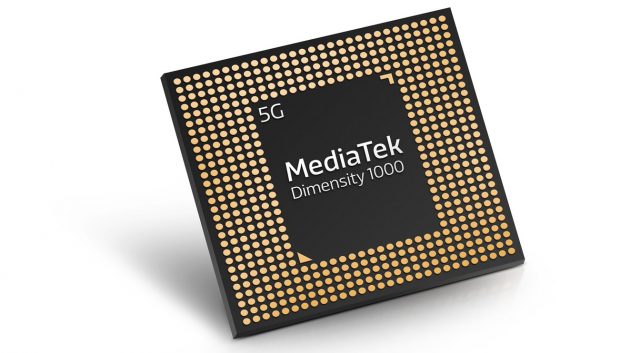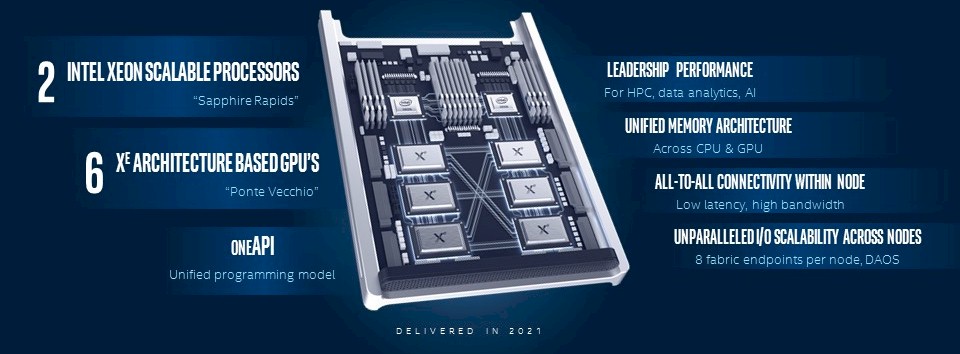Has Cerebras solved the classic wafer-scale challenges?
Powering and cooling such a large device was also a big question mark. With the launch of its CS-1 system, a computer built around this extraordinary device, Cerebras has now revealed a few small practical details.
The CS-1 is 26” tall and occupies a third of a data centre rack (15 rack units). This system, says the company, can replace hundreds or thousands of GPUs, which would need dozens of racks. There is one WSE in each system and it is fed with 1.2 Tbps of data (twelve 100-Gigabit Ethernet lanes).
Documents released by Cerebras reveal that “powering and cooling the world’s largest and fastest processor chip is an exceptionally challenging undertaking,” and while they don’t say exactly how much power is required, they do give us a clue. Apparently, the system uses less than one-tenth of the power (per compute unit) that a GPU-based system would, and they also mention that a GPU-based system on the same scale would require hundreds of kilowatts. Perhaps it’s safe, then, to assume the CS-1 draws power in the tens of kilowatts range.
 croysdale
croysdale
Why Intel Might Be Mulling Another Big AI Acquisition to Help it Battle Nvidia
Though it has been working to commercialize a pair of AI accelerators, the chip giant is reportedly in talks to buy AI chip startup Habana Labs.
Source: Why Intel Might Be Mulling Another Big AI Acquisition to Help it Battle Nvidia
Arm Inches Closer to Supercomputing – Semiwiki
When it comes to Arm, we think mostly of phones…
Ampere preps an 80-core Arm processor for the cloud
A new Ampere chip due out next year is single-threaded to avoid the ‘noisy neighbor’ problem that can impede customer workloads in multi-tenant cloud-provider networks.
Introducing TensorBoard.dev: a new way to share your ML experiment results
Posted by Gal Oshri , Product Manager TensorBoard , TensorFlow’s visualization toolkit, is often used by researchers and engineers to visualize and understand their ML experiments. It enables tracking experiment metrics , visualizing models , profiling ML programs , visualizing hyperparameter tuning experiments , and much more.
We have seen people sharing screenshots of their TensorBoards to achieve this. However, screenshots aren’t interactive and fail to capture all the details. At Google, researchers and engineers often communicate their insights about model behavior by sending their TensorBoard visualizations to teammates. Our goal is to provide this capability to the broader community.
Source: Introducing TensorBoard.dev: a new way to share your ML experiment results
Intel Blames Qualcomm for Modem Business Failure, Urges Court to Uphold FTC Ruling – ExtremeTech
Intel is arguing that the case against Qualcomm should stand in a new court filing. Intel sold its 5G modem business to Apple after years of failing to catch hold in the market and blames Qualcomm for the loss.
Qualcomm refuses to sell modem chips to a third-party handset manufacturer (OEM) unless the OEM takes a separate license to Qualcomm’s standard essential payments (SEPs) on Qualcomm’s preferred terms–including the payment of a royalty to Qualcomm on every handset an OEM sells, even if the handset uses a rival’s chip. That coercion allows Qualcomm to shift part of its chip revenues into its royalty rates, overcharging on the patent royalty while undercharging for chips. That manipulation of prices in turn destroys the normal competitive process in the chip market. It artificially limits OEMs’ interest in buying modem chips from suppliers like Intel because OEMs must pay Qualcomm’s manipulated royalty on top of whatever the competing supplier charges for the chip itself. At the same time, because Qualcomm has funneled its monopoly chip profits into coerced “royalties,” rivals like Intel cannot engage in meaningful price competition in the sale of modem chips.
Source: Intel Blames Qualcomm for Modem Business Failure, Urges Court to Uphold FTC Ruling – ExtremeTech
Innovium Unveils New Data-Center Switch Family for Applications upto 6.4Tbps
Innovium last week announced TERALYNX 5, a new Ethernet switch silicon family for applications ranging from 1.2 to 6.4Tbps.
Source: Innovium Unveils New Data-Center Switch Family for Applications upto 6.4Tbps
MediaTek Announces Dimensity 1000 ARM Chip With Integrated 5G Modem
MediaTek has announced its new Dimensity 1000 system-on-a-chip (SoC) with the latest ARM CPU cores and an integrated 5G modem . The Dimensity 1000 will support QHD+ resolutions with refresh rates up to 90Hz. At 1080p, the Dimensity can go as high as 120Hz.
Source: MediaTek Announces Dimensity 1000 ARM Chip With Integrated 5G Modem
Has Arm Discovered the Ecosystem Keys?
Arm server development is a reality and a growing one at that. Not just from a performance point of view but also, perhaps more important, from an ecosystem view.
Be it the Marvell ThunderX2 processor or the Ampere eMAG Skylark processor, the hyperscale, cloud, enterprise ecosystems are willing to adopt these new processors to further improve their TCO or dollars/core.
…
To make things better for the Arm ecosystem, in 2017, a brand new company, Ampere Computing bought the X-Gene assets and re-introduced the X-Gene processor as the Ampere eMAG processor



